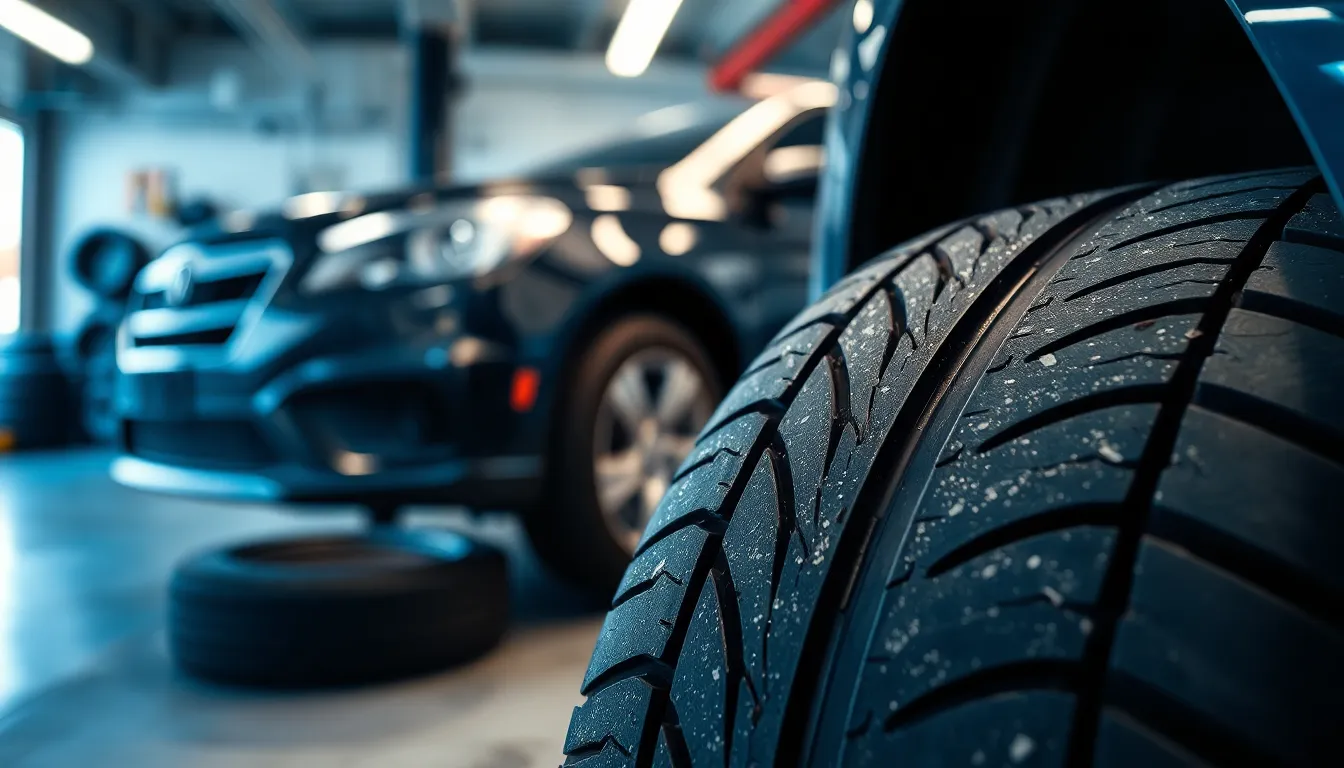Most drivers notice uneven tire wear but aren’t sure why it happens. We’ve all been there – standing in the garage wondering why our front tires look more worn than the back ones, or vice versa. This common automotive mystery affects your wallet, safety, and driving performance more than you might realize.
The truth about tire wear patterns isn’t as straightforward as you’d expect. Several factors determine whether your front or rear tires wear faster, including your vehicle’s drivetrain, driving habits, and even the type of roads you frequent. Understanding these patterns can save you hundreds of dollars in premature tire replacements.
We’ll break down the science behind tire wear and give you practical insights to maximize your tire life. Whether you’re driving a front-wheel-drive sedan or an all-wheel-drive SUV, knowing which tires work harder helps you make smarter maintenance decisions and stay safer on the road.
Do Front or Back Tires Wear Faster: The Basic Answer
Front tires typically wear faster than rear tires in most vehicles due to their multiple responsibilities. These tires handle steering, braking, and acceleration forces simultaneously, creating significantly more stress on the rubber compounds.
Front-wheel drive vehicles experience the most pronounced front tire wear because the front wheels manage both power delivery and steering duties. The front tires in these cars wear approximately 30-40% faster than rear tires under normal driving conditions.
All-wheel drive and rear-wheel drive vehicles show more balanced wear patterns, though front tires still experience faster degradation. The distribution varies based on the exact drivetrain configuration and torque split between axles.
| Vehicle Type | Front Tire Wear Rate | Rear Tire Wear Rate | Wear Difference |
|---|---|---|---|
| Front-wheel drive | 30-40% faster | Standard rate | Important |
| Rear-wheel drive | 15-25% faster | Standard rate | Moderate |
| All-wheel drive | 10-20% faster | Standard rate | Minimal |
Braking forces contribute substantially to front tire wear since most vehicles use a front-biased braking system. The front brakes handle 60-70% of the stopping force, transferring this stress directly to the tire contact patches.
Steering input creates additional wear through cornering forces and alignment adjustments. Every turn, lane change, and parking maneuver places extra demands on front tire treads.
Weight transfer during acceleration and deceleration further accelerates front tire deterioration. The physics of momentum shifts more load to the front axle during braking and to the rear during acceleration, but the cumulative effect favors faster front wear in typical driving scenarios.
Factors That Determine Tire Wear Patterns
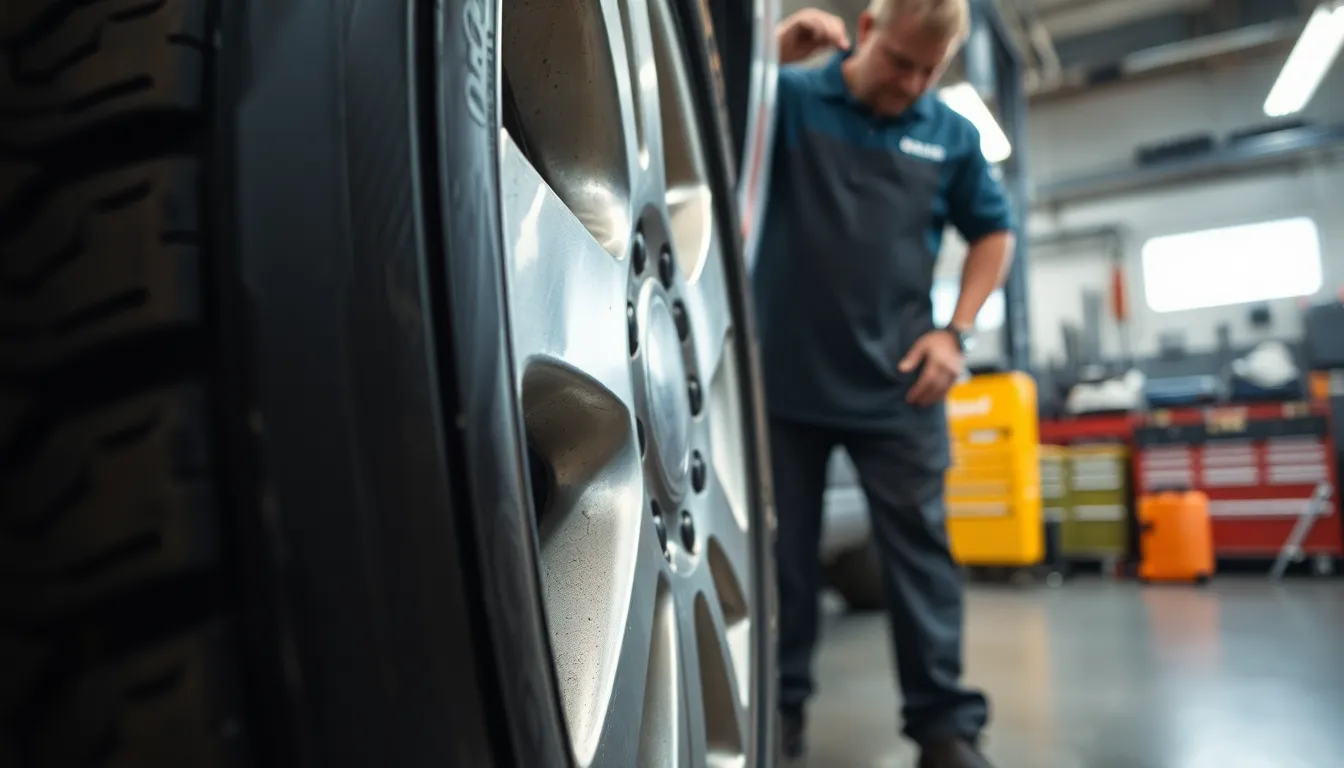
Understanding the exact factors that create uneven tire wear helps us predict and prevent premature tire replacement. Multiple vehicle characteristics and driving conditions work together to determine which tires experience the most stress and deterioration.
Vehicle Type and Drive System
Front-wheel drive vehicles create the most dramatic difference in tire wear rates between front and rear positions. The front tires in FWD systems handle acceleration, steering, and most braking forces simultaneously, creating significantly faster wear compared to rear tires. This triple responsibility means front tires experience constant stress during every driving maneuver.
Rear-wheel drive vehicles distribute wear more evenly across all four tires since rear tires manage propulsion while front tires focus primarily on steering. But, aggressive driving in RWD vehicles can still accelerate front tire wear due to increased braking and steering demands.
All-wheel drive and four-wheel drive systems typically produce the most balanced tire wear patterns among all drivetrain types. The power distribution across all four wheels reduces the concentration of forces on any single pair of tires, though aggressive driving or inadequate tire rotation can still create uneven wear patterns.
Weight Distribution
Vehicles with heavier front ends place additional stress on front tires regardless of drivetrain configuration. Most passenger cars feature front-mounted engines, which concentrates approximately 60% of the vehicle’s weight over the front axle. This weight imbalance increases friction and contact pressure on front tires during all driving conditions.
Front-heavy vehicles experience greater tire wear during cornering, braking, and acceleration due to increased load transfer. The additional weight creates higher temperatures in front tires, accelerating rubber compound breakdown and tread wear.
Driving Habits and Road Conditions
Aggressive driving behaviors amplify tire wear differences between front and rear positions. Hard braking, rapid acceleration, and sharp cornering place extreme stress on front tires since they handle both steering input and most braking forces. These driving patterns can increase front tire wear by 40-50% compared to gentle driving habits.
Poor road conditions affect front tires more severely than rear tires in most vehicles. Potholes, rough pavement, and uneven surfaces create impact forces that front tires absorb while maintaining steering control. Frequent exposure to these conditions accelerates front tire deterioration and can create irregular wear patterns that reduce overall tire life.
Front-Wheel Drive Vehicles: Why Front Tires Wear Faster
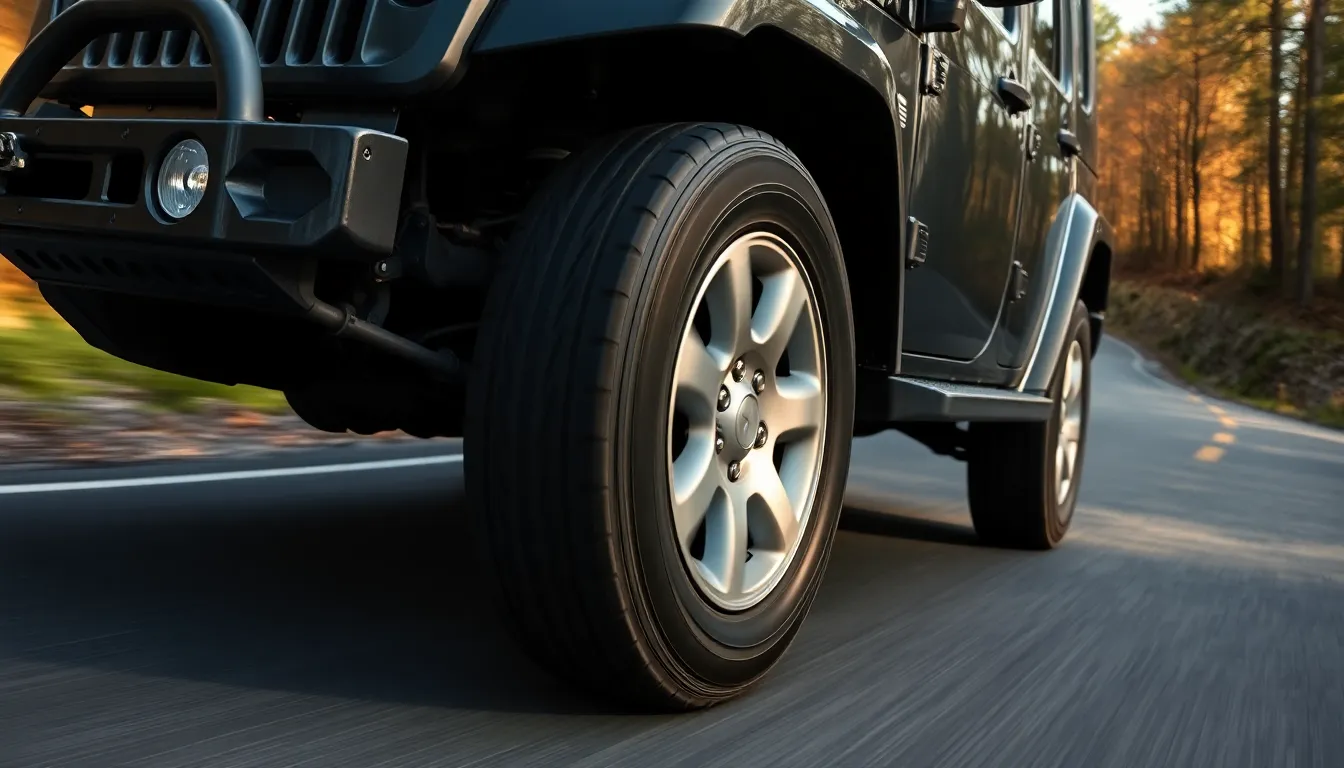
Front-wheel drive vehicles demonstrate the most pronounced difference in tire wear rates between front and rear axles. The front tires in these vehicles handle three critical functions simultaneously, creating a perfect storm for accelerated wear.
Steering and Braking Load
Steering forces place tremendous stress on front tires as they constantly adjust to maintain directional control. During turns, approximately 80% of cornering forces concentrate on the inner edge of the tire tread, creating uneven wear patterns that significantly reduce tire lifespan. Each steering input generates lateral forces that gradually erode the tire compound, particularly affecting the shoulders and edges.
Braking loads compound this wear pattern as weight transfers forward during deceleration. The front tires absorb the majority of braking forces, causing increased contact pressure against the road surface. This additional pressure accelerates tread wear across the entire contact patch, with the most important impact occurring during aggressive braking scenarios.
Acceleration Forces
Engine power delivery through the front wheels creates additional traction demands that rear tires simply don’t experience. Front tires must grip the road surface to transfer power from the engine to forward motion, generating heat and friction that accelerates rubber degradation. The combination of power delivery and steering control means front tires work harder during every acceleration event.
Wheel spin during aggressive acceleration particularly damages front tire treads as the rubber compounds heat up beyond optimal operating temperatures. FWD vehicles experience this phenomenon more frequently because the front wheels must simultaneously handle steering inputs and power delivery, creating a more complex stress environment than single-function rear tires encounter.
Rear-Wheel Drive Vehicles: More Balanced Wear Patterns

Rear-wheel drive vehicles distribute drivetrain forces differently than their front-wheel drive counterparts, creating a more balanced tire wear environment. The rear tires handle power delivery and acceleration forces while the front tires manage steering and braking responsibilities. This division of labor results in more uniform wear patterns across all four tires compared to FWD vehicles.
Power distribution mechanics in RWD systems place acceleration stress on the rear tires rather than concentrating all forces on the front wheels. Rear tires experience important traction demands during acceleration, managing the torque transfer from the engine to the road surface. Front tires in these vehicles focus primarily on steering input and braking forces, reducing their overall workload compared to FWD systems.
Performance oriented RWD vehicles present unique wear characteristics that differ from standard passenger cars. High-powered sports cars often experience accelerated rear tire wear due to aggressive acceleration forces and oversteer tendencies during cornering. These vehicles stress rear tires significantly more than typical RWD sedans or trucks.
Staggered tire setups on performance RWD vehicles require careful attention to maintenance practices. Different sized front and rear tires prevent traditional rotation patterns, making proper inflation and alignment critical for minimizing uneven wear. Regular monitoring becomes essential when rotation options aren’t available.
| RWD Vehicle Type | Primary Wear Location | Contributing Factors |
|---|---|---|
| Standard RWD | Balanced front/rear | Even force distribution |
| Performance RWD | Rear tires | High acceleration forces, oversteer |
| Staggered Setup | Rear tires | Limited rotation options |
Maintenance strategies for RWD vehicles focus on preserving the natural balance these systems provide. Proper wheel alignment maintains even contact patches across all tires. Inflation pressure monitoring prevents premature wear from under or over inflation. Regular inspection helps identify early signs of uneven wear before they become costly problems.
All-Wheel Drive Systems: Unique Wear Characteristics
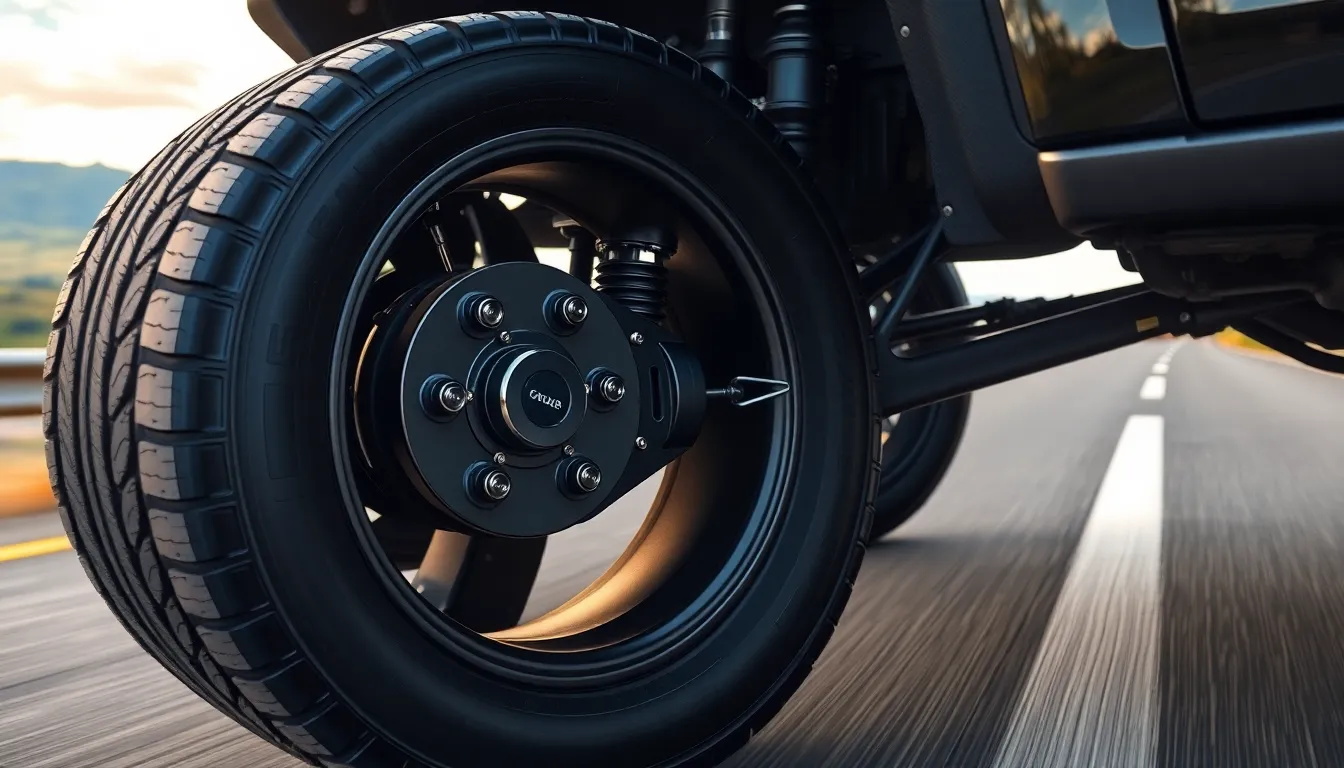
All-wheel drive systems provide the most balanced tire wear patterns among all drivetrain configurations. AWD vehicles distribute power across all four tires simultaneously, which creates more uniform stress distribution and extends overall tire longevity compared to front-wheel or rear-wheel drive systems.
Modern AWD systems actively manage power delivery between front and rear axles based on traction conditions. This intelligent distribution prevents any single tire from bearing excessive stress during acceleration, cornering, or braking events. The result is tire wear that occurs more gradually and evenly across the entire vehicle.
Electronic stability control systems in AWD vehicles further enhance wear balance by preventing excessive wheelspin on individual tires. These systems monitor wheel speed differences and adjust power delivery within milliseconds to maintain optimal traction. Such precise control mechanisms significantly reduce the irregular wear patterns common in other drivetrain types.
AWD vehicles maintain better traction and stability across various driving conditions, which contributes to more consistent tire contact patches. Unlike FWD systems where front tires handle multiple functions simultaneously, AWD configurations share workload responsibilities across all four wheels. This distribution reduces the concentrated stress that typically accelerates tire degradation.
Driving conditions still influence wear patterns in AWD vehicles even though their inherently balanced design. Aggressive cornering can cause outer tires to wear faster due to increased lateral forces. Heavy acceleration may produce slight rear tire wear acceleration as the system transfers more power rearward under load.
Vehicle setup variations affect AWD tire wear characteristics significantly. Performance-oriented AWD systems with rear-biased power distribution may exhibit slightly accelerated rear tire wear during spirited driving. Conversely, efficiency-focused AWD systems that primarily operate in front-wheel drive mode show wear patterns similar to traditional FWD vehicles during normal operation.
Tire rotation schedules become particularly important for AWD vehicles to maximize the inherent wear balance these systems provide. Regular rotation every 5,000 to 7,500 miles ensures that slight wear differences between positions don’t compound over time. This maintenance practice preserves the even wear characteristics that make AWD systems advantageous for tire longevity.
How to Identify Uneven Tire Wear
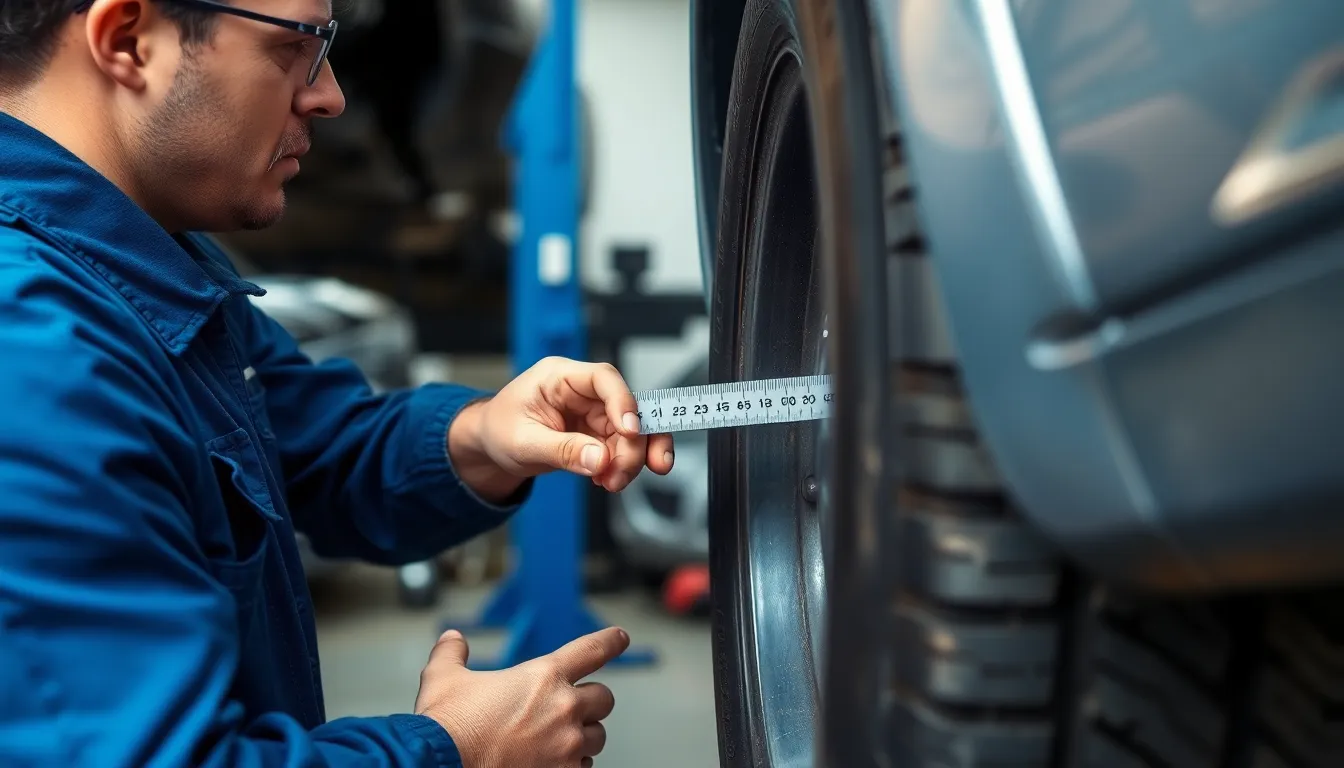
Identifying uneven tire wear patterns requires systematic observation and measurement techniques. Early detection prevents costly replacements and maintains vehicle safety.
Visual Inspection Techniques
Examine each tire’s surface for wear pattern variations across different sections. Cupping appears as scalloped dips along the tread edge and indicates suspension issues or improper inflation. Feathering creates smooth wear on one side of tread blocks and rough texture on the opposite side, typically signaling alignment problems.
Check inner and outer tread edges for excessive wear compared to the center section. Front tires often show more wear on inner edges due to camber angle effects during turns. Bald spots indicate suspension component failure or wheel imbalance issues.
Compare tread depth visually between front and rear tires to spot important differences. Front tires on FWD vehicles commonly display 30-40% more wear than rear tires under normal driving conditions. Look for consistent wear patterns across matching tire pairs, as dramatic differences suggest mechanical problems.
Measuring Tread Depth
Use a tread depth gauge to obtain precise measurements at multiple points across each tire’s width. Take readings at the outer edge, center, and inner edge to identify uneven wear patterns. Record measurements from at least three locations around each tire’s circumference for accuracy.
New tires typically start with 10/32 to 11/32 inches of tread depth. Replace tires when measurements reach 2/32 inches, though many experts recommend replacement at 4/32 inches for improved wet weather performance. Compare measurements between tires, as differences exceeding 2/32 inches indicate irregular wear requiring attention.
Document measurements in a simple tracking system to monitor wear progression over time. Measure tread depth monthly and before long trips to catch problems early. Digital depth gauges provide more accurate readings than coin tests, making them essential tools for proper tire maintenance.
Extending Tire Life Through Proper Maintenance
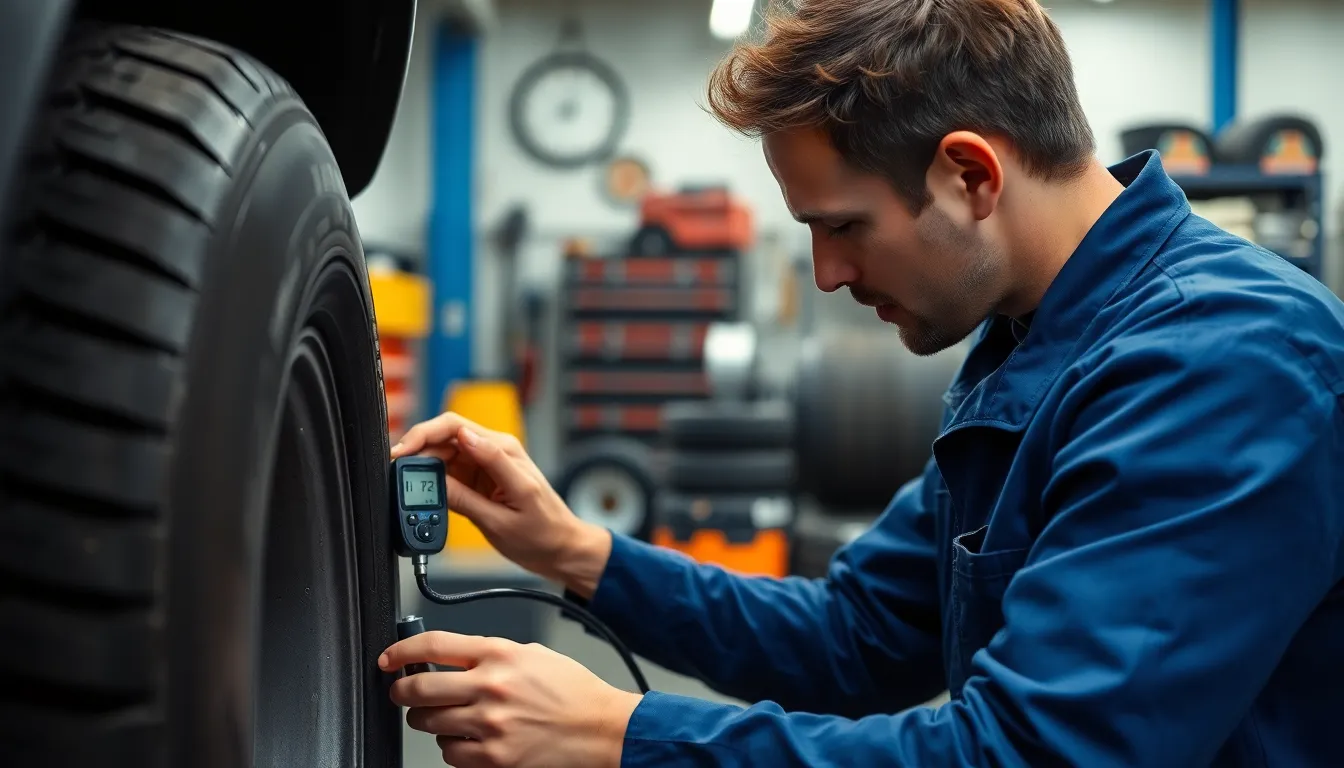
Proactive maintenance practices significantly reduce uneven tire wear and maximize tire longevity across all drivetrain configurations. Strategic maintenance approaches address the underlying causes of accelerated wear patterns we’ve discussed.
Regular Tire Rotation
Tire rotation redistributes wear patterns by moving tires to different positions on the vehicle. Front-wheel drive vehicles benefit most from rotation schedules every 5,000 to 7,500 miles due to their pronounced front tire wear rates.
Standard rotation patterns include front-to-back swaps for directional tires and cross patterns for non-directional designs. AWD vehicles require exact rotation patterns that maintain the system’s balanced wear characteristics while preventing drivetrain stress.
Performance vehicles with staggered tire setups cannot use traditional rotation methods. These configurations demand more frequent tire inspections and replacement strategies that address wear patterns exact to each wheel position.
Documentation of rotation schedules helps track wear progression and identifies developing problems. Consistent rotation intervals prevent the 30-40% faster wear rate typically seen in front tires of FWD vehicles.
Proper Inflation and Alignment
Maintaining correct tire pressure prevents uneven contact patches that accelerate exact tread areas. Under-inflated tires create excessive shoulder wear while over-inflation causes center tread deterioration.
Monthly pressure checks using accurate gauges ensure optimal contact between tire and road surface. Temperature changes affect pressure levels by approximately 1 PSI per 10-degree temperature variation.
Wheel alignment maintains proper tire contact angles and prevents premature wear patterns. Misalignment creates edge wear that can reduce tire life by 25-50% compared to properly aligned wheels.
Professional alignment services measure camber, caster, and toe angles to manufacturer specifications. Aggressive driving conditions and poor road surfaces require more frequent alignment checks to maintain optimal tire wear patterns.
Suspension component inspections identify worn parts that contribute to alignment problems. Replacing damaged shocks, struts, and bushings preserves alignment settings and extends tire life across all vehicle types.
When to Replace Tires Based on Wear Patterns

Recognizing when tires reach replacement thresholds protects both vehicle safety and performance. Tread depth measurements provide the most reliable indicator for tire replacement decisions across all drivetrain configurations.
Critical Replacement Thresholds
Replace tires immediately when tread depth reaches 2/32 inch, as this represents the legal minimum in most jurisdictions. Performance deteriorates significantly before reaching this threshold, making replacement at 4/32 inch advisable for optimal safety margins.
| Tread Depth | Replacement Action | Safety Impact |
|---|---|---|
| 2/32 inch | Immediate replacement required | Legal minimum threshold |
| 4/32 inch | Replacement recommended | Reduced wet weather traction |
| 6/32 inch | Monitor closely | Noticeable performance decline |
Front Tire Wear Pattern Recognition
Inner edge wear patterns on front tires indicate alignment issues requiring immediate attention before tire replacement. Cupping patterns suggest suspension component failure that must be addressed to prevent rapid replacement tire deterioration.
Center wear on front tires typically results from overinflation, while outer edge wear indicates underinflation or aggressive cornering habits. Diagonal wear patterns across the tread surface signal toe misalignment requiring professional correction.
Rear Tire Wear Assessment
Even wear patterns across rear tire treads indicate normal operation but still require replacement when tread depth falls below safety thresholds. Center wear on rear tires often results from excessive inflation pressure or aggressive acceleration in rear wheel drive vehicles.
Outer edge wear on rear tires suggests underinflation or cornering forces exceeding tire design limits. Performance vehicle rear tires frequently show accelerated center wear from high torque delivery during acceleration.
Rotation Schedule Adherence
Rotate tires every 5,000 to 7,000 miles to promote uniform wear distribution across all four positions. Front wheel drive vehicles benefit most from regular rotation due to their inherent front tire wear acceleration.
All wheel drive systems require precise rotation patterns to maintain drivetrain balance and prevent differential stress. Staggered tire setups on performance vehicles cannot follow traditional rotation patterns but still require regular wear monitoring.
Safety Considerations for Replacement
Replace tires in pairs when wear differences exceed 2/32 inch between axles to maintain vehicle stability. Mixing tire types or brands compromises handling characteristics and electronic stability system effectiveness.
Weather conditions influence replacement timing, with wet weather performance degrading substantially when tread depth approaches 4/32 inch. Winter driving conditions require earlier replacement due to reduced snow and ice traction capabilities.
Conclusion
Understanding tire wear patterns empowers us to make smarter maintenance decisions and extend our tire investments. We’ve seen how drivetrain configuration plays a crucial role – with front-wheel drive vehicles showing the most dramatic differences and AWD systems providing the most balanced wear.
The key takeaway is that proactive maintenance trumps reactive repairs every time. Regular rotations proper inflation and alignment checks prevent the costly surprises that catch most drivers off guard.
By implementing these strategies and staying vigilant about wear patterns we can maximize tire life regardless of what we drive. Remember that every 5,000 miles of preventive care saves us hundreds in premature replacements while keeping our vehicles safer on the road.
Frequently Asked Questions
Why do front tires wear faster than rear tires?
Front tires typically wear 30-40% faster than rear tires because they handle multiple demanding functions simultaneously. In front-wheel drive vehicles, front tires manage steering, braking, acceleration forces, and power delivery. This creates a complex stress environment with increased heat, friction, and uneven contact pressure that accelerates tread wear compared to rear tires.
Do all-wheel drive vehicles have more even tire wear?
Yes, all-wheel drive (AWD) vehicles provide the most balanced tire wear patterns among all drivetrain configurations. AWD systems distribute power across all four tires simultaneously, creating uniform stress distribution. Modern AWD systems actively manage power delivery based on traction conditions, preventing excessive stress on any single tire and extending overall tire longevity.
How often should I rotate my tires?
Tire rotation should be performed every 5,000 to 7,500 miles for most vehicles. Front-wheel drive vehicles particularly benefit from regular rotation to redistribute wear patterns and prevent accelerated front tire wear. AWD vehicles should maintain this schedule to maximize their inherent wear balance, while performance vehicles with staggered setups may require specialized rotation methods.
When should I replace my tires based on wear?
Tires should be immediately replaced when tread depth reaches 2/32 inch, with 4/32 inch recommended for optimal safety. Replace tires in pairs when wear differences exceed 2/32 inch between front and rear. Monitor tread depth regularly using a gauge, and consider weather conditions that may influence replacement timing for maximum safety and performance.
How can I identify uneven tire wear patterns?
Examine tire surfaces for wear pattern variations, check tread depth across the tire width, and compare wear between front and rear tires. Use a tread depth gauge for precise measurements and document findings to monitor wear progression. Look for specific patterns like inner edge wear (alignment issues) or center wear (overinflation) that indicate maintenance needs.
What maintenance practices prevent uneven tire wear?
Maintain proper tire inflation by checking pressure monthly, ensure proper wheel alignment through professional services, and follow regular rotation schedules. Monitor tire condition through visual inspections and tread depth measurements. Address alignment issues promptly, maintain consistent driving habits, and document tire care to extend tire life and improve vehicle performance.

